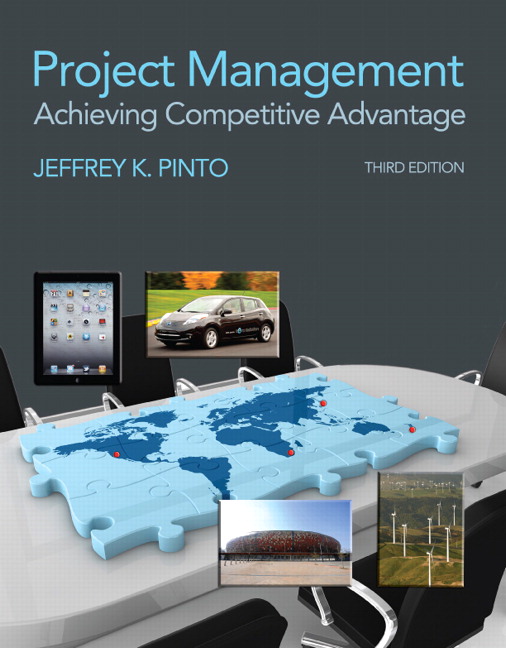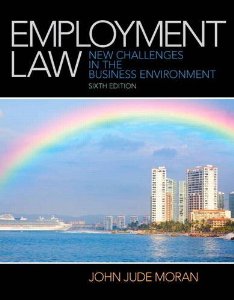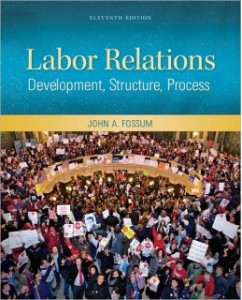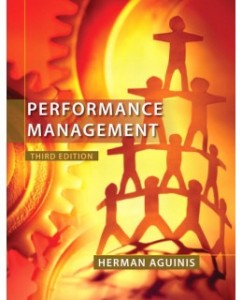Description
Project Management: Achieving Competitive Advantage, 3e (Pinto)
Chapter 1 Introduction: Why Project Management?
1.1 True/False Questions
1) Projects, rather than repetitive tasks, are now the basis for most value-added in business.
Answer: TRUE
Diff: 1
Section: 1.0 Introduction
Skill: Factual
AACSB Tag: Reflective
2) Projects are typically ongoing, day-to-day activities that have goods and services as outputs.
Answer: FALSE
Diff: 2
Section: 1.1 What Is a Project?
Skill: Definition
AACSB Tag: Reflective
3) A typical project stays within functional and organizational boundaries.
Answer: FALSE
Diff: 2
Section: 1.1 What Is a Project?
Skill: Definition
AACSB Tag: Reflective
4) The special nature of projects relieves project managers from their routine of planning, organizing, motivating, directing, and controlling.
Answer: FALSE
Diff: 2
Section: 1.1 What Is a Project?
Skill: Factual
AACSB Tag: Reflective
5) A project exists outside of the standard line organization.
Answer: TRUE
Diff: 2
Section: 1.1 What Is a Project?
Skill: Factual
AACSB Tag: Reflective
6) Product life cycles are longer now than twenty years ago.
Answer: FALSE
Diff: 2
Section: 1.2 Why Are Projects Important?
Skill: Factual
AACSB Tag: Reflective
7) The emergence of global markets has made project management skills more critical.
Answer: TRUE
Diff: 1
Section: 1.2 Why Are Projects Important?
Skill: Factual
AACSB Tag: Reflective
8) Since a business gains market share with day-to-day operations, senior managers value process management experience over project management experience.
Answer: FALSE
Diff: 1
Section: 1.2 Why Are Projects Important?
Skill: Factual
AACSB Tag: Reflective
9) The initial goal and technical specifications of the project are developed during the planning stage.
Answer: FALSE
Diff: 2
Section: 1.3 Project Life Cycles
Skill: Factual
AACSB Tag: Reflective
10) Client interest in a project is highest during the termination and conceptual phases.
Answer: TRUE
Diff: 2
Section: 1.3 Project Life Cycles
Skill: Factual
AACSB Tag: Reflective
11) The classic triple constraint standard for project performance is composed of time, cost, and client acceptance.
Answer: FALSE
Diff: 2
Section: 1.4 Determinants of Project Success
Skill: Definition
AACSB Tag: Reflective
12) The business success dimension of project success determines whether the project achieved significant commercial success.
Answer: TRUE
Diff: 2
Section: 1.4 Determinants of Project Success
Skill: Factual
AACSB Tag: Reflective
13) The Atkinson model for assessing project success gathers input from all of the project’s stakeholders.
Answer: TRUE
Diff: 2
Section: 1.4 Determinants of Project Success
Skill: Factual
AACSB Tag: Reflective
14) The use of benchmarking allows companies that are relatively immature at project management to achieve quantum leaps of improvement.
Answer: FALSE
Diff: 2
Section: 1.5 Developing Project Management Maturity
Skill: Factual
AACSB Tag: Reflective
15) Most effective project maturity models chart both a set of standards that are currently accepted as state-of-the-art as well as a process for achieving significant movement towards these benchmarks.
Answer: TRUE
Diff: 2
Section: 1.5 Developing Project Management Maturity
Skill: Factual
AACSB Tag: Reflective
16) Acme uses no recognizable project management processes and has entertaining project meetings because each member has a unique way of reporting progress or lack thereof. Acme is most likely at the moderate level in the generic project management maturity model.
Answer: FALSE
Diff: 2
Section: 1.5 Developing Project Management Maturity
Skill: Conceptual
AACSB Tag: Reflective
17) Any organization, no matter how initially unskilled in project management, can begin to chart a course toward the type of project organization they wish to become.
Answer: TRUE
Diff: 2
Section: 1.5 Developing Project Management Maturity
Skill: Definition
AACSB Tag: Reflective
18) A company’s culture has little impact on whether projects are successfully implemented.
Answer: FALSE
Diff: 2
Section: 1.6 Project Elements and Text Organization
Skill: Conceptual
AACSB Tag: Reflective
1.2 Short Answer Questions
1) A(n) ________ refers to ongoing, day-to-day activities in which an organization engages while producing goods and services.
Answer: process
Diff: 1
Section: 1.1 What Is a Project?
Skill: Definition
AACSB Tag: Reflective
2) The goals of a project are sometimes called ________.
Answer: deliverables
Diff: 1
Section: 1.1 What Is a Project?
Skill: Definition
AACSB Tag: Reflective
3) Projects are ________-focused.
Answer: customer
Diff: 1
Section: 1.1 What Is a Project?
Skill: Factual
AACSB Tag: Reflective
4) Project management entails crossing ________ and ________ boundaries.
Answer: functional, organizational
Diff: 2
Section: 1.1 What Is a Project?
Skill: Factual
AACSB Tag: Reflective
5) In general, product life cycles are becoming ________ and product launch windows are becoming ________.
Answer: shorter, narrower
Diff: 1
Section: 1.2 Why Are Projects Important?
Skill: Factual
AACSB Tag: Reflective
6) ________ serves as an excellent training ground for future senior executives in most organizations.
Answer: Project management
Diff: 2
Section: 1.2 Why Are Projects Important?
Skill: Factual
AACSB Tag: Reflective
7) The stages in a project’s development are known as the ________.
Answer: project life cycle
Diff: 1
Section: 1.3 Project Life Cycles
Skill: Definition
AACSB Tag: Reflective
8) Detailed specifications, schematics, and schedules are all developed during the ________ stage.
Answer: planning
Diff: 1
Section: 1.3 Project Life Cycles
Skill: Definition
AACSB Tag: Reflective
9) Creativity is at its zenith during the ________ stage of the project life cycle.
Answer: execution
Diff: 2
Section: 1.3 Project Life Cycles
Skill: Factual
AACSB Tag: Reflective
10) The degree of risk associated with the project is at its highest during the ________ stage.
Answer: conceptualization
Diff: 2
Section: 1.3 Project Life Cycles
Skill: Factual
AACSB Tag: Reflective
11) The triple constraint of project success is ________.
Answer: time, cost, performance
Diff: 2
Section: 1.4 Determinants of Project Success
Skill: Definition
AACSB Tag: Reflective
12) A project may be on-time, under-budget, and perform according to specifications, but if it lacks ________, it would not be considered successful under the quadruple constraint paradigm.
Answer: client acceptance
Diff: 2
Section: 1.4 Determinants of Project Success
Skill: Definition
AACSB Tag: Reflective
13) A project may satisfy immediate needs by being efficient, impacting the customer positively, and achieving business success. If the project helps open new markets, product lines or helps develop new technology, it would also meet the ________ criterion.
Answer: preparing for the future
Diff: 2
Section: 1.4 Determinants of Project Success
Skill: Definition
AACSB Tag: Reflective
14) Atkinson suggests that all groups that are affected by a project, otherwise known as ________, should have a hand in assessing project success.
Answer: stakeholders
Diff: 2
Section: 1.4 Determinants of Project Success
Skill: Definition
AACSB Tag: Reflective
15) ________ are used to allow organizations to benchmark the best practices of successful project management firms.
Answer: Project management maturity models
Diff: 1
Section: 1.5 Developing Project Management Maturity
Skill: Definition
AACSB Tag: Reflective
16) The purpose of ________ is to systematically manage the process improvements of project delivery by a single organization over a period of time.
Answer: benchmarking
Diff: 1
Section: 1.5 Developing Project Management Maturity
Skill: Definition
AACSB Tag: Reflective
17) The Center for Business Practices’ maturity model stage that describes project management as an ad hoc process is ________.
Answer: Level 1 or Initial Process
Diff: 2
Section: 1.5 Developing Project Management Maturity
Skill: Factual
AACSB Tag: Reflective
18) In general, all project management maturity models agree that an organization that has internalized all necessary project management principles and is actively seeking to move beyond these in innovative ways is ________.
Answer: (project) mature
Diff: 2
Section: 1.5 Developing Project Management Maturity
Skill: Factual
AACSB Tag: Reflective
1.3 Multiple-Choice Questions
1) Which of the following types of activities is more closely associated with projects rather than processes?
A) an activity that is ongoing
B) an activity that is day-to-day
C) an activity that uses existing systems
D) an activity that establishes its own work rules
Answer: D
Diff: 1
Section: 1.1 What Is a Project?
Skill: Factual
AACSB Tag: Reflective
2) Which of the following is accomplished through project management?
A) A cellular phone company activates a new customer’s service.
B) An automotive manufacturer produces a day’s quota of vehicles.
C) A software developer creates a new crash-proof operating system.
D) A retailer restocks the shelves after a day of brisk sales.
Answer: C
Diff: 1
Section: 1.1 What Is a Project?
Skill: Factual
AACSB Tag: Reflective
3) A project typically has:
A) a defined start and end date.
B) a defined start date but no defined end date.
C) no defined start but a defined end date.
D) no defined start or end date.
Answer: A
Diff: 1
Section: 1.1 What Is a Project?
Skill: Definition
AACSB Tag: Reflective
4) The Project Management Body of Knowledge Guide definition of a project indicates that a project is:
A) multifunctional.
B) temporary.
C) designed to consume human resources.
D) limited by a budget.
Answer: B
Diff: 2
Section: 1.1 What Is a Project?
Skill: Factual
AACSB Tag: Reflective
5) Project members may be from:
A) different departments.
B) other organizational units.
C) one functional area.
D) all of the above.
Answer: D
Diff: 2
Section: 1.1 What Is a Project?
Skill: Definition
AACSB Tag: Reflective
6) There is no such thing as a project team:
A) with a deliverable.
B) with an ongoing, non-specific purpose.
C) with a goal.
D) with a project manager.
Answer: B
Diff: 2
Section: 1.1 What Is a Project?
Skill: Factual
AACSB Tag: Reflective
7) A project that results in “doing the wrong things well” has ignored the:
A) budgetary goal.
B) technical goal.
C) customer satisfaction goal.
D) scheduling goal.
Answer: C
Diff: 2
Section: 1.1 What Is a Project?
Skill: Conceptual
AACSB Tag: Reflective
8) Which of these is NOT characteristic of a project?
A) Projects are responsible for the newest and most improved products, services, and organizational processes.
B) Projects are ad hoc endeavors with a clear life cycle.
C) Projects provide a philosophy and strategy for the management of change.
D) Traditional process management functions of planning, organizing, and controlling do not apply to project management.
Answer: D
Diff: 2
Section: 1.1 What Is a Project?
Skill: Factual
AACSB Tag: Reflective
9) Which of the following is NOT a project constraint?
A) the budget
B) the customer requirements
C) the schedule
D) the technical specifications
Answer: B
Diff: 2
Section: 1.1 What Is a Project?
Skill: Factual
AACSB Tag: Reflective
10) Projects differ from classic organizational processes because projects are:
A) discrete activities.
B) part of line organization.
C) well established systems in place to integrate efforts.
D) multi-objective.
Answer: A
Diff: 2
Section: 1.1 What Is a Project?
Skill: Factual
AACSB Tag: Reflective
11) Process management features ________ with respect to project management.
A) greater team member heterogeneity
B) greater certainty of performance
C) fewer numbers of goals and objectives
D) lower adherence to established practices
Answer: C
Diff: 2
Section: 1.1 What Is a Project?
Skill: Conceptual
AACSB Tag: Reflective
12) Studies of IT projects reveal that:
A) initial cost estimates are overrun by an average of 15%.
B) over 66% of IT projects were delivered to customers but not used.
C) about 25% of all IT projects become runaways by overshooting budgets and timetables.
D) up to 75% of software projects are cancelled.
Answer: D
Diff: 3
Section: 1.1 What Is a Project?
Skill: Factual
AACSB Tag: Use of IT
13) A business reality that makes effective project management critical is the fact that:
A) products are becoming increasingly simple.
B) inflation is rampant.
C) product life cycles are compressing.
D) product launch windows are widening.
Answer: C
Diff: 1
Section: 1.2 Why Are Projects Important?
Skill: Factual
AACSB Tag: Reflective
14) A product is introduced into a market, gains the acceptance of a fickle public, and finally is supplanted by a new and improved offering. This phenomenon is known as the:
A) product life cycle.
B) rule of 80.
C) Mendoza line.
D) beta.
Answer: A
Diff: 1
Section: 1.2 Why Are Projects Important?
Skill: Factual
AACSB Tag: Reflective
15) Which of these countries is NOT identified in the text as having a developing economy with a substantial market?
A) Russia
B) China
C) India
D) Europe
Answer: D
Diff: 1
Section: 1.2 Why Are Projects Important?
Skill: Factual
AACSB Tag: Reflective







Reviews
There are no reviews yet.